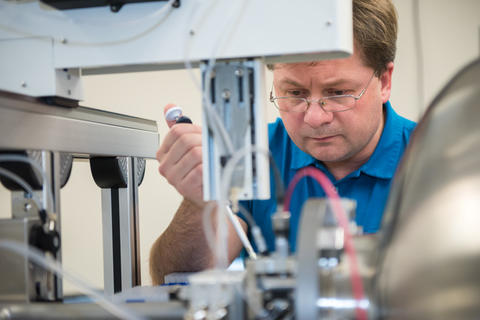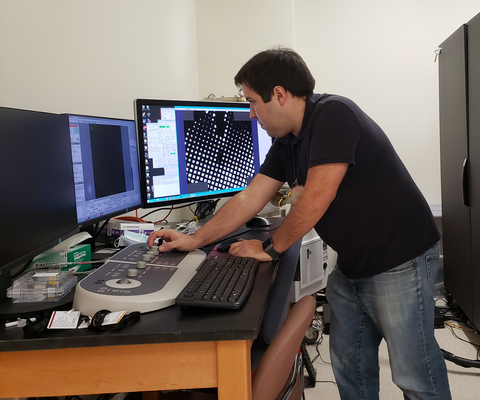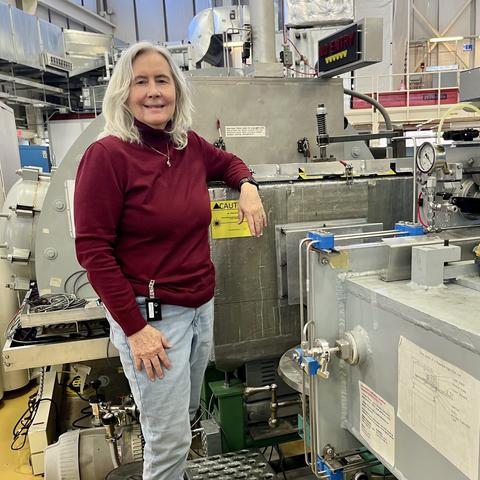A team of three NIST researchers, each with unique expertise, is studying a vaccine developed by biotech company Novavax for SARS-CoV-2, the virus that causes COVID-19.
The vaccine contains harmless versions of the viral spike proteins that trigger the immune system, as well as an adjuvant, a substance that enhances the overall immune response.
Read about the group’s research efforts below.
Alexander Grishaev and Solution X-Ray Scattering

What does a beam of X-rays have to do with a COVID-19 vaccine? That’s where NIST chemist Alexander Grishaev comes in with his expertise in solution X-ray scattering — a technique that shines a thin beam of X-rays on a liquid sample to gather more detailed information on its structure.
Alexander’s technique allows scientists to obtain information on the vaccine material without having to prepare the sample, such as freezing it, in advance. The technique sends a beam of X-rays to irradiate the material, which then interacts with the atoms in the sample. This causes the X-rays to scatter from the material at different angles, which are then measured. In doing so, scientists can determine the structure of the different components of the vaccine.
This technique is used together with cryogenic electron microscopy and solution small angle neutron scattering, which together provide a complementary view of different aspects of the structure of the vaccine material. This may sound simple, but it’s a complex measurement problem, which is why NIST researchers stepped up to the challenge with their knowledge and measurement tools to help solve it.
Thomas Cleveland and Cryogenic Electron Microscopy

To study the vaccine, NIST physicist Thomas Cleveland is using cryogenic electron microscopy, a technique that creates images of a cryogenically frozen sample by beaming electrons through it.
The method gives detailed information on the structure of the protein particles inside the vaccine, in this case, harmless versions of the COVID spike proteins that stimulate the immune system.
Susan Krueger and Small-Angle Neutron Scattering

If you need a way to analyze biological materials on the microscopic scale, look no further than small-angle neutron scattering (SANS). The technique helps scientists study a material by shining a beam of neutrons on it and getting details at the nanometer to micrometer scale.
And it’s performed right here at NIST, specifically at the NIST Center for Neutron Research (NCNR).
With more than 30 years at the NCNR, NIST physicist Susan Krueger brings her background in biophysics to SANS experiments in order to determine the structure and function of biological macromolecules such as proteins.
And the vaccine is a real-world side to her work that you may recognize.
How does SANS work? A beam of neutrons probes the vaccine material, which is in a solution consisting mainly of water. The neutrons interact with the nuclei of the molecules in the sample, scattering off at different angles. Scientists can measure the resulting pattern to determine the structure and composition of the molecules.
For the Novavax vaccine, Susan used a technique called contrast variation, switching hydrogen atoms in the solution with deuterium (an isotope of hydrogen with a different number of neutrons in the nucleus). This meant that she could better visualize components in the vaccine, identify them, and determine their spatial relationship to each other.
The data gathered from SANS and other methods allows researchers to create structural models of the vaccine material. These are necessary in understanding how vaccines work, which can lead to the development of more effective vaccines.
Follow us on social media for more like this from all across NIST!

